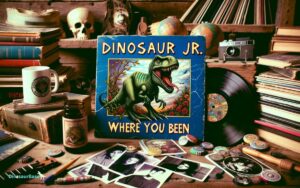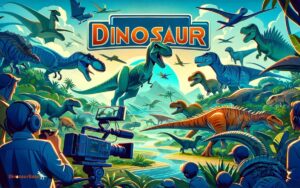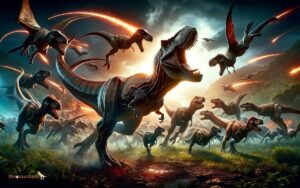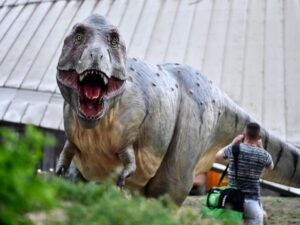What Did Dinosaurs Really Look Like?: Unveiling Ancient Mysteries
Dinosaurs likely had diverse appearances, with scales, feathers, and a variety of colors. Scientists use fossils and modern technology to make educated guesses about their looks.
Unveiling the true visage of dinosaurs has fascinated scientists and enthusiasts alike for decades. A breakthrough in understanding comes from careful examination of fossil evidence and advanced imaging techniques. Paleontologists have made significant strides in reconstructing their appearance, from the texture of their skin to the possible palette of their coloration.
Artistic representations have evolved from purely speculative to highly informed interpretations, guided by the latest findings in comparative anatomy and phylogenetics. These reconstructions suggest a rich tapestry of life, where some species boasted feathers while others had scales, akin to their modern descendants. This quest to depict ancient creatures as accurately as possible not only satisfies human curiosity but also enriches our comprehension of evolutionary biology and Earth’s history. The pursuit to reveal the true appearance of dinosaurs remains a dynamic field, blending science with art, and continuously reshaping our perception of these magnificent creatures of the past.
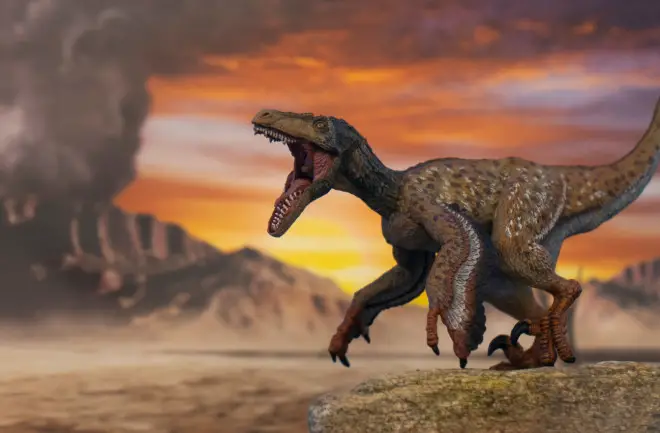
The Fascination With Dinosaur Appearance
Dinosaurs captivate our imagination with their mysterious past. We often ask, “What did these colossal creatures look like?” This question leads us on an exciting journey through science and creativity.
Myths Versus Science
Dinosaur representations have evolved significantly over the years. Early ideas about their appearance were based on limited fossil evidence and wild speculation.
Scientists today use advanced techniques to paint a clearer picture. They study fossilized bones, skin impressions, and even preserved soft tissues. This scientific evidence gives us a more accurate visualization of their appearance.
Some common myths debunked by science include:
- Dinosaurs dragged their tails – Fossils show they held them off the ground.
- All dinosaurs were scaly – Some had feathers.
- Dinosaurs all roared – Evidence suggests some may have chirped or bellowed.
Cultural Representations
Dinosaurs in pop culture often reflect the time’s scientific understanding mixed with creativity.
Films, books, and art have depicted dinosaurs in various ways. These cultural pieces shape the public’s view of these ancient beasts.
Notable examples include:
| Representation | Description |
|---|---|
| Jurassic Park | Brought dinosaurs to life using advanced CGI based on the science of the 1990s. |
| The Land Before Time | Animated feature aimed at children, characterized dinosaurs with human-like emotions. |
| Dinosaur Comics | Webcomic series presenting dinosaurs in humorous and surreal modern-day scenarios. |
These works often highlight fierce predators, gentle giants, and the dynamic world they inhabited.

Credit: www.ebay.com
Fossil Clues To Dinosaur Physiology
The past is shrouded in mystery, but fossils act as time machines, revealing secrets of ancient dinosaurs. These prehistoric puzzles offer clues that scientists piece together to unveil the physiology of dinosaurs. From the texture of their skin to the color of their feathers, fossils hold answers to how these colossal creatures once roamed the Earth.
The Role Of Paleontology
Paleontology plays a vital role in reconstructing dinosaur appearances. It uses fossils to understand their lives. Paleontologists examine these petrified pieces, discovering how dinosaurs looked, moved, and lived.
- Fossilized bones suggest size and shape.
- Skin impressions hint at texture and patterns.
- Teeth give insights on diet and feeding habits.
Interpreting Skeletal Structures
Dinosaur skeletons are like natural blueprints of their bodies. Analyzing these structures helps us picture their posture and gait.
| Bone | Information Provided |
|---|---|
| Skull | Brain size, senses, and diet |
| Limbs | Movement type and speed |
| Ribs | Chest shape and breathing |
| Vertebrae | Posture and flexibility |
Accurate interpretations of these fossilized remains are critical. They allow us to recreate dinosaurs not just as bones, but as once-living creatures. Each discovery brings us closer to seeing their true form.
Modern Techniques In Reconstructing Dinosaurs
What did dinosaurs really look like? This question has intrigued scientists for decades. With modern technology, we are closer than ever to piecing together the appearance of these ancient creatures. Techniques ranging from detailed imaging to predictive modeling have shed new light on dinosaur biology, appearance, and even behavior.
Advances In Imaging Technology
Recent breakthroughs in imaging have transformed our understanding of dinosaur anatomy. High-resolution scans reveal intricate details hidden within fossils. Scientists use these images to study bone structure and density.
- CT scanning allows for non-destructive examination of fossils.
- 3D modeling turns scans into digital skeletons.
- Microscopy uncovers the tiniest features, like skin cells.
These methods paint an accurate picture of how dinosaurs once lived.
From Bones To Flesh: Predictive Modeling
Predictive modeling takes bones to the next level. It adds muscles, skin, and other features to build the whole dinosaur. Scientists use clues from living animals to make educated guesses.
- Examine related species for muscle and skin patterns.
- Apply this knowledge to dinosaur skeletons.
- Adjust models with new fossil discoveries.
This approach helps create lifelike models of creatures that roamed the Earth millions of years ago.
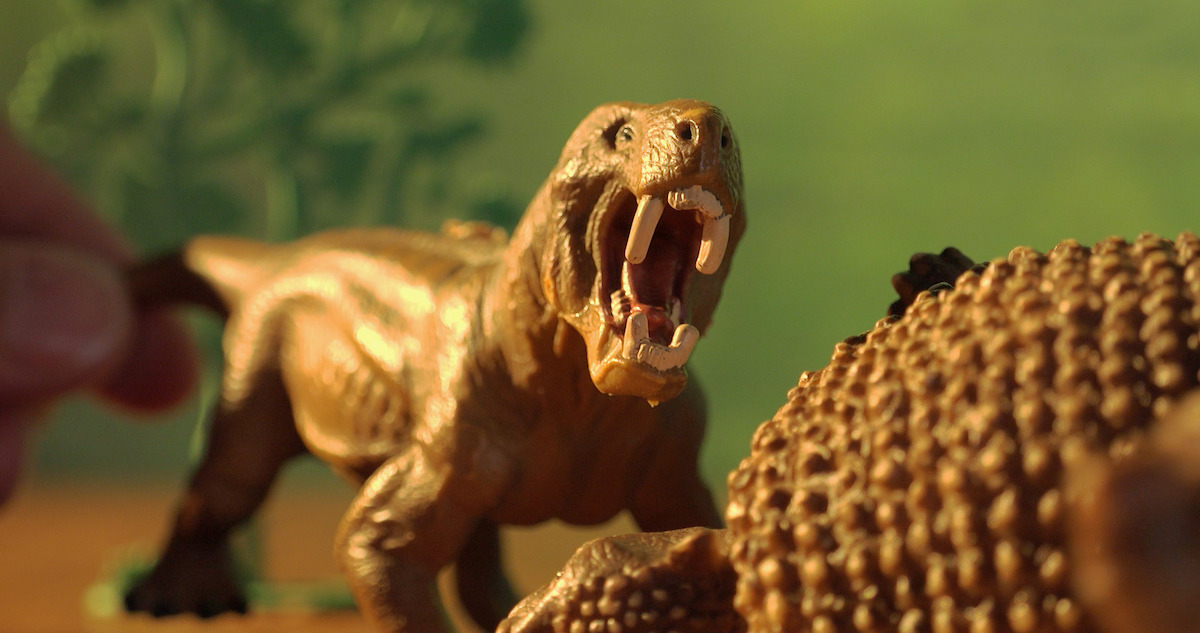
Credit: www.netflix.com
The Color Of Dinosaurs: An Evolving Understanding
Imagine a dinosaur in your mind. What colors do you see? For many years, the colors of dinosaurs were a mystery. Science could not tell us much. Now, exciting discoveries are changing this. We are beginning to understand what colors these ancient creatures might have been. Let’s dive into the fascinating realm of dinosaur pigmentation and the scientific advancements revealing their true hues.
Melanin And Microfossils
Scientists use special microscopes to look at fossils. They find tiny structures called melanosomes. These are much like the ones in birds’ feathers today. Melanosomes give birds their colors. This means dinosaurs may have had similar colors. Imagine dinosaurs with colors like crows or peacocks!
- Structure of melanosomes matters for color.
- Different shapes may mean different colors.
- Spherical melanosomes could mean glossy black feathers.
- Rod-shaped ones might mean reddish-brown colors.
Comparisons With Modern-day Relatives
We can learn about dinosaur colors by looking at their relatives. Birds and reptiles alive today are evolutionary cousins of dinosaurs. They can give us clues about dinosaur colors.
- Bird feathers can tell us about scales on dinosaurs.
- Reptile skin patterns might show dinosaur patterns.
- Parrots’ bright colors could mean colorful dinosaurs.
So, next time you see a bird, think of it as a colorful window into the past. It can show us the possible colors of their dinosaur ancestors.
Feathers Or Scales: Reshaping The Dinosaur Image
The question of what dinosaurs really looked like has tickled curiosities for ages. Recently, new evidence has emerged. It suggests the beasts from our prehistoric past wore a very different covering than once thought. For years, we’ve visualized dinosaurs as scaly, reptilian creatures. But the latest findings are painting a new picture–one that highlights feathers over scales. This shift not only changes their appearance but also deepens our understanding of dinosaur biology and behavior.
Discoveries Of Feathered Fossils
The discovery of feathered dinosaurs in the late 20th century took the science world by storm. Early finds in China showed us species like the Velociraptor and Microraptor with feathers. These specimens provide concrete proof that birds are modern-day dinosaurs’ descendants. They also suggest that feathers were potentially widespread among theropods.
- 1996: Sinosauropteryx, the first dinosaur outside of the Avialae group found with feather-like structures,
- 2010: Anchiornis, discovered with feathered limbs presenting bird-like features,
- Various non-avian dinosaurs with evidence showing feather presence.
Implications For Thermoregulation And Behavior
Feathers changed ideas about how dinosaurs dealt with cold. They probably helped to keep these animals warm. Dinosaurs might have been more active during different seasons than predicted. Feathered ones likely displayed complex behaviors – similar to birds today.
| Feather Function | Behavioral Implication |
|---|---|
| Insulation | Dinosaurs could have survived in cooler climates. |
| Courtship displays | Possibility of colorful, complex feathers used to attract mates. |
| Flight and gliding capabilities | Suggests an aerial dimension to how some dinosaurs moved. |
Integrating Behavior And Environment
Picture a world where massive creatures roam. That world was once ours. Dinosaurs dominated the land for over 160 million years. But what did they really look like? To understand this, we must explore their behavior and environment.
Linking Habitat With Physical Traits
Dinosaurs lived in various habitats – from dense forests to arid deserts. Their physical traits often reflected their surroundings:
- Long necks might help reach high foliage in forests.
- Thick skin could protect against heat in deserts.
| Habitat | Trait | Possible Reason |
|---|---|---|
| Forests | Camouflage | Hide from predators or ambush prey. |
| Plains | Speedy legs | Chase down prey or migrate swiftly. |
Each environment left its mark on the dinosaurs’ appearance and abilities.
Dinosaur Social Structures And Appearance
Dinosaurs also exhibited complex social behaviors. This influenced their appearance:
- Herding dinosaurs might develop similar markings for identification.
- Predators could evolve bright colors to intimidate or communicate.
Their social lives painted a picture of their day-to-day interactions and survival tactics.
So, dinosaurs’ looks weren’t just for show. They were a result of adaptations moulded by their habitats and behaviors. From the spikes of a Stegosaurus to the frills of a Triceratops, each feature tells a story of survival in the ancient world.
The Challenges And Limitations Of Reconstruction
Reconstructing dinosaurs poses unique challenges. Scientists use fossilized remains to bring these ancient creatures back to life. But, the fossil record has limitations. Artist’s impressions fill in the gaps, yet they add a layer of uncertainty. How accurate are these depictions?
Uncertainties And Gaps In The Fossil Record
Fossils provide vital clues to how dinosaurs may have looked. Yet, many fossils are incomplete. Soft tissues, like skin and feathers, rarely fossilize. This leaves gaps in our understanding.
- Only hard parts like bones and teeth tend to survive as fossils.
- DNA, which could tell us more, degrades over time.
- Imprints and other trace fossils offer limited glimpses of dinosaur life.
The Impact Of Artistic Interpretation
Artists help to bring fossils to life. They use scientific research and creativity to reconstruct dinosaur appearances. However, this can lead to varied interpretations.
| Aspect of Reconstruction | Artistic Challenge |
|---|---|
| Coloration | Lack of pigment data in fossils |
| Texture | Soft tissues are rarely preserved |
| Behaviors | Speculative without direct evidence |
Every artist adds personal style. This leads to different dinosaurs in books, movies, and museums. Such differences can confuse or mislead audiences.
The Future Of Dinosaur Visualization
Visualizing dinosaurs has always sparked imagination and curiosity. Science and technology march forward, offering new tools to peel back the layers of time. The way we see these magnificent creatures is on the brink of transformation.
Genetic Research And Dinosaur Appearance
Genetic research unravels mysteries locked within fossils and amber. As we better understand dinosaur DNA, we inch closer to accurate portrayals. Let’s explore:
- Scientists extract genetic material from well-preserved specimens.
- Comparative analysis with modern animals reveals physical traits.
- Research sheds light on skin color, texture, and feather patterns.
This groundbreaking work paints a picture far more detailed than ever before.
Augmented Reality And Interactive Exhibits
Augmented reality (AR) breathes life into dinosaur exhibits. Interactive displays allow us to walk with the giants of the past.
| Technology | Experience |
|---|---|
| AR Goggles | 360-degree dinosaur environments |
| Touch Screens | Customize your own dinosaur |
| Gesture Control | Interact with digital fossils |
These dynamic experiences foster a hands-on connection with prehistoric life.

Credit: www.greenmatters.com
Frequently Asked Questions On What Did Dinosaurs Really Look Like
What Did Dinosaurs Actually Look Like In Real Life?
Dinosaurs likely had varied features, including feathers, scales, and distinct colors. Their actual appearance is reconstructed through fossils, skin impressions, and scientific inference. They ranged from bird-like to reptilian in their looks.
What Did Dinosaurs Actually Look Like 2023?
Dinosaurs had diverse appearances, including scales, feathers, and distinct colors, as revealed by 2023 paleontological studies. Their physical features varied widely across species, from giant long-necked sauropods to small, agile velociraptors.
Will We Ever Know Exactly What Dinosaurs Looked Like?
It’s unlikely we’ll know exactly what dinosaurs looked like, as soft tissues rarely fossilize, leaving mainly bones and some impressions for study.
What Does The Bible Say About Dinosaurs?
The Bible does not specifically mention dinosaurs. Some believers infer their existence from generalized descriptions of “beasts” and “dragons” in ancient texts.
Conclusion
Unveiling the true appearance of dinosaurs has been a captivating journey. Advances in science bring us closer to understanding these ancient creatures. Our image of them continues to evolve with each discovery. Embrace the mystery, and stay curious about the prehistoric past.
Discoveries await that will surely refine our perceptions even further.



